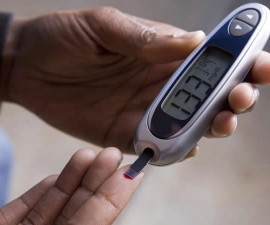Juvenile diabetes can affect 5 year old children. It is a condition in which the pancreas cannot produce insulin that your body needs to survive, and you usually need to replace the missing insulin. That’s why it is also called insulin dependent – another alternative name is type-1 diabetes. What are the signs and symptoms of the disease?
Understanding diabetes in general
It is a lifelong metabolic disease that affects how the body uses sugar (glucose), the main source of energy to support your body’s functions. You get glucose from foods, especially foods high in glucose.
In the body, foods that you eat are digested and broken down into glucose and other nutrients which then absorbed into circulation (bloodstream). Therefore the amount of glucose in the blood (blood sugar level) is usually high after a meal. To respond it, the body releases more insulin from pancreas.
Insulin plays a key role to allow glucose move from the bloodstream to the cells and tissues of the body, where eventually it is converted to become energy. As the amount of glucose in the circulation decreases, so does the amount of insulin released by pancreas.
In diabetes, this normal mechanism goes awry. There are several types of diabetes:
- Type-1 (juvenile diabetes) is a condition in which the pancreas is very poor in making and releasing insulin – even it may not be able to make insulin at all. Patients usually need to take or inject insulin treatment every day to help manage their blood sugar under control.
- Type-2 is diabetes in which the body cannot make adequate insulin or cannot use insulin effectively (insulin resistance). It is not insulin dependent! Patients don’t always need to take insulin treatment since their pancreas still works and produce some insulin, though sometime they may also need to take insulin.
- Gestational diabetes. As the name implies, it only occurs during pregnancy. And typically, it will go away on its own after pregnancy. The cause is not fully known. But it’s thought that some pregnancy hormones are to blame. It doesn’t affect all pregnancies. The bad news, pregnant women with it is at high risk of developing type-2 diabetes.
Causes of juvenile diabetes
What experts know that it’s commonly found in patients with autoimmune disorder, a condition of when the body immune system mistakenly attacks and destroys its own healthy cells! Without known reason the immune system attacks islet cells (insulin-producing cells) of pancreas. This can be severe enough to interfere with the pancreas’s ability in making insulin. Even in some cases, pancreas is not able to make insulin at all.
While the exact cause of the disease still remains puzzling, some risk factors have been confirmed. These include:
- The disease is likely to run in families. In other words, a family history of the same condition has an effect. If you have father, mother, or a sibling (close relative) with juvenile diabetes, your risk of developing the condition is slightly increased!
- Genetic factor. It’s thought that some people have genetic susceptibility to develop juvenile diabetes. In some cases, genetic testing – usually through a clinical trial – can be used to determine whether a child has certain genes that indicate an increased risk of the condition.
Risk factors are factors or conditions that can increase your risk of developing the disease. Unfortunately, it seems that there are also not many known risk factors for juvenile diabetes. Other possible risk factors include:
- Exposure to certain viruses may trigger the mistakenly autoimmune attack on insulin-producing cells of pancreas or this exposure may directly infect insulin-producing cells. Some of these viruses are cytomegalovirus, rubella, coxsackie virus, or Epstein-Barr virus.
- Low level of vitamin D may have an effect, too. But it is still debatable! Early intake of diary cow’s milk (a popular source for vitamin D) might be associated with an increased risk of juvenile diabetes. On the other hand, a few studies also suggest that vitamin D may help reduce the risk of the condition.
- In baby, research suggests that the timing of the introduction for cereal matters since it may affect the risk of juvenile diabetes in childhood. According to a clinical trial, the ages between 4 and 7 months may be the best time for introducing cereal.
- Drinking water containing nitrates may also have an effect!
The exact cause of juvenile diabetes is not fully known. But in general, it seems that there may be a combination of different factors!
Juvenile diabetes symptoms in 5-year old
The symptoms can vary. It may take a long time to develop or it may come suddenly. In children, the symptoms usually develop quickly, over a period of months or even weeks. These include:




